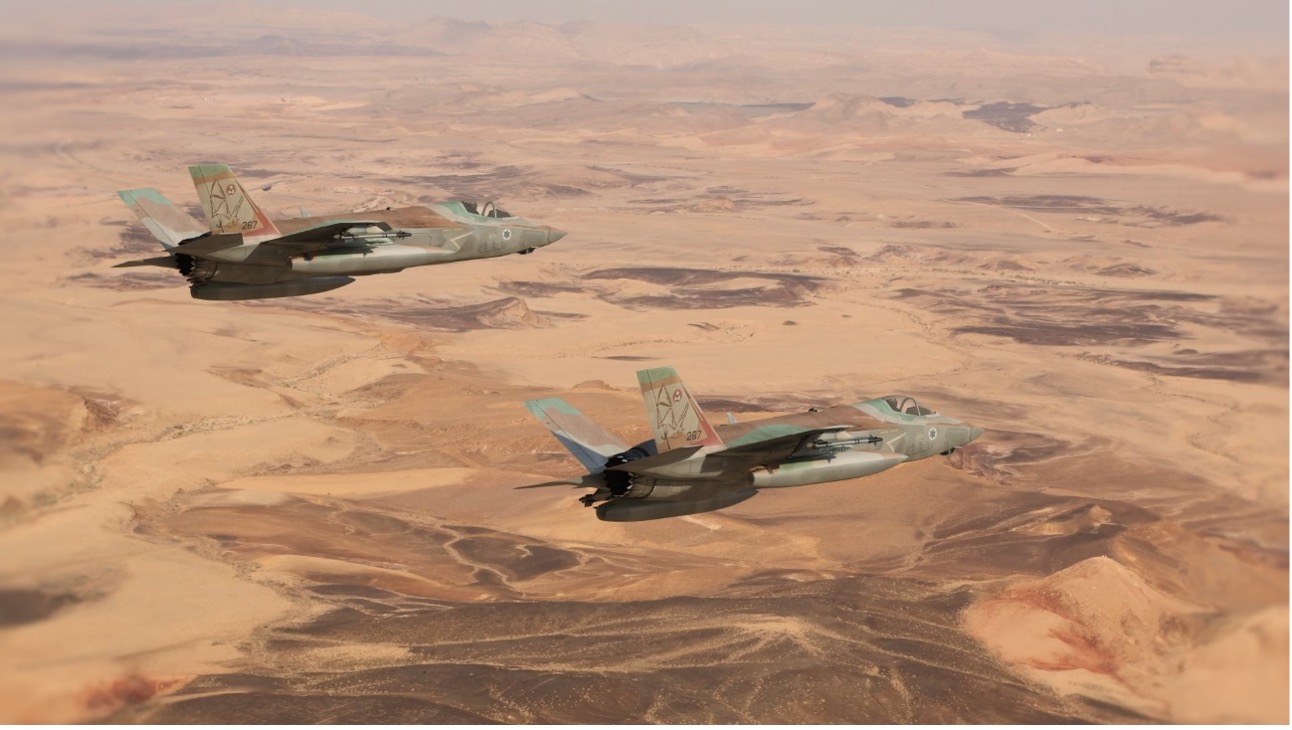Even Short Wars Are Costly, so Protect Your Wealth
Wars go on and on… until they don’t. But first, wars tend to grow, and then they grow out of control. Romans had their god of war, Mars, who was considered a fickle entity. To old Romans, there was no way to predict what Mars wanted from mankind, certainly not on fields of battle. But usually, it was a stiff bill.

God of War, Mars. Courtesy Hermitage, St. Petersburg.
Another ancient way to frame the point, and perhaps it’s closer to modern pecuniary interests, is that “wars cost much silver,” as noted by Sun Tzu in his classic work, The Art of War.
So, where are we today on the scales of geopolitics, if not economics? Sorry, but it’s too early to say, certainly with respect to recent developments in the Middle East. We mere mortals are on the outside looking in. We don’t know very much, despite our access to online information and small armies of instant-experts on You Tube, discussing everything martial.
Per last night’s news flash from the White House, maybe there will soon be an Israel-Iran (and U.S.) cease-fire. Or perhaps not, according to contradictory, if not cryptic accounts from Tehran. Again, we must wait and see.
So today, let’s follow some facts and figure out what we know. Then let’s try to discern what we don’t know, which is plenty. And as this kinetic episode of history unfolds, we’ll get into some investment and wealth protection ideas. So, here goes…
Pay Attention, but Question Everything
Last week I wrote this:
“As an old Navy guy who has seen more than a few military operations come and go, my Prime Directive on events like this is: First reports from the front lines of a war are almost always wrong.
“Don’t believe anything that comes at you early in the operation. You are you, not them. You are here, not there. You are a civilian, not inside the intelligence cells. And even if you’re an intel officer staring at the screen, do you really know what you are seeing? Everything takes time to process.
“Then there’s this old quip: Nothing is true until it has been officially denied.”
Well, apparently before the outbreak of fighting the Israelis penetrated Iranian security every which way but Sunday. Israel had spies and plants all over the place, or so it seems. And Iran was unprepared for what happened.
Out of the blue, Israel kicked off a massive assault on Iran with cyber-attacks, coupled with well-planned and targeted assassinations of political, military and scientific personnel via drones, snipers and pre-planted bombs. That, and evidently Israeli (or proxy) special ops guys took out more than a few Iranian air defense sites with antitank missiles and similar ordnance.
Then came Israeli jets, led by F-35I aircraft, a version of the U.S. Air Force F-35A that has been modified by both Lockheed and Israeli industries to suit the unique needs of that country.

Israel’s Lockheed F-35I “Adir” aircraft. Courtesy fightersweep.com.
Israel’s investment in stealth airplanes and sophisticated electronics paid off. The brown birds ripped Iranian air defenses to shreds, allowing other Israeli aircraft, namely Israeli versions of the American F-15E and F-16, plus drones, to fly in and burn the airwaves with jamming and air defense suppression, while bombing all manner of military, political and nuclear-related targets.
Within a few days, Israel claimed “air superiority” over northwestern Iran. The proof is that Israeli jets had open ingress to and egress from Iran, via air corridors through northern Iraq and Syria. Indeed, Israeli aerial refueling aircraft set up tanking orbits above Iraq and Syria, and then openly refueled the bomb-droppers and missile-shooters on the way in and out.
Iran is no pushover, however, and fought back according to a battle plan long in the making. That is, Iran’s ace in the hole is its vast missile arsenal, publicly estimated in the range of 5,000 units, although U.S. Secretary of State Marco Rubio let loose in an unguarded moment the number of 12,000.
Along these lines, consider that, over many decades, Iran has devoted immense national resources to developing missiles. This includes educating thousands of rocket scientists (yes, seriously!), and a related labor force to support the country’s defense program. Thus, it makes sense that Iran has warehouses and caves chock-full of missiles, more or less ready to roll out and fire.
So, give Iran credit for an exceptional missile program, with outstanding technical competence, reliable systems, and downrange targeting within Israel, if not all across the Middle East (i.e., very good intelligence collection.) And thus, for the past 12 days Iran has launched massive waves of missiles against Israel; and while more than a few were shot down by Israeli air defenses, many more made it through and impacted the aim points.
Broadly speaking in terms of the correlation of forces, Israel has hit and wrecked many targets in Iran, while Iran has in turn smashed innumerable Israeli sites. The cost of repairs and rebuilding will be expensive, like off-the-charts costly, just as Sun Tzu pointed out.
Among Israeli losses are that country’s Ministry of Defense building; the headquarters site of Mossad, the storied intelligence agency; Israel’s cyber-command; many research labs; many weapon storage sites; many airfields with hangars and maintenance sheds; and a long list of other military locales.
On the civilian-industrial side, Iranian targets within Israel included the cargo port facility at Haifa, along with Israel’s main oil refinery and storage tanks in the same area. Plus, Iran blasted Israel’s largest power plant at Ashdod, plunging the country into brownouts and blackouts. And Ben Gurion Airport has been heavily damaged and is now mostly shut down, while Israel’s southern port facility at Eilat is out of commission.
The Missile Angle of War
In a deadly tradeoff that has truly determined the course and outcome of this conflict, Israel used its strong advantage in air power to degrade Iran’s missile capability on the ground, hitting Iranian storage sites and the all-important launcher trucks and command vans.
In return, Iran’s missile barrages have drained Israel’s stocks of every variety of anti-air weapon, which range from so-called “Iron Dome” rounds to far more sophisticated Arrow missiles, along with U.S. Patriot and THAAD rounds. (I’ll skip the technical details.)
The bottom line is that Iran has taken hard blows from Israel to its military capabilities, as well as numerous political and economic targets, and of course Iran’s long-running nuclear program; and hold that thought about the nuke program.
While Israel too is reeling, among other reasons due to its small geographic size and next-to-no operational depth. For example, almost the entire Israeli population is called several times per day into bomb shelters during missile attacks, while power and water are spotty and economic activity is difficult in every respect. Consider all of this in context of almost no active seaborne or aerial commerce in or out of Israel. In essence, the Israeli economy is seizing up.
Then, of course, came this past weekend’s geostrategic fireworks with American long-range air strikes on Iranian nuclear targets by Air Force/Northrop B-2 bombers that dropped huge, ground-penetrating ordnance; this, coupled with Navy/Raytheon Tomahawk cruise missiles that hit another nuclear nuke site.
You’ll find many news accounts on You Tube etc. that are filled with reports on the B-2 and cruise missile strikes. So, I’ll refrain from saying much other than they exhibited America’s superb aerospace technology coupled with outstanding training of aircrew, maintenance personnel, an awesome aerial refueling complex, supported by stunningly good intelligence gathering and targeting. Oh, and that BLU-57 bomb is a military technology wonder.
Meanwhile, the submarine-launched cruise missiles hit exactly where they were aimed, another great day at the office for U.S. weapon technology.
My one general critique of the B-2 and Tomahawk strike is that it came in the early hours of June 22, which happens to be the 84th anniversary of Germany’s 1941 invasion of the former Soviet Union, a date that matters deeply and is in a sense sacred to Russians. While this calendar point may seem unimportant to many Americans just now, I assure you that in the future it will become a friction issue in U.S.-Russia relations.
Takeaways
Here are several points that resonate with me just now about the Israel-Iran conflict, and the U.S. strike with B-2s and Tomahawks:
This whole conflict has been expensive. Costly weapons and munitions. Lots of expensive fuel, certainly aerial fuel from the tankers. Plenty of death, injury, destruction and the need to rebuild what was wrecked. And to the extent that the U.S. government participated, it’s all on borrowed money, so it’s just more deficit spending.
There’s nothing that we out here can do, except buy gold and silver; take Sun Tzu’s advice on this one.
Stealth aircraft, embodied by the F-35I appear to work in combat, at least against an air defense system like Iran had. It’s a long discussion, but I’m still wary of running even the best so-called “stealth” up against, say a Russian integrated air defense system like we see at work in Ukraine. Then again, my security clearance is long expired, and I can’t speak to the current level of technology.
Of course, the F-35I success was also enabled by comprehensive planning that included Israeli cyber-attacks, disruption in the rear via sabotage and assassinations, special ops attacks on air defense radars, and likely other and related aerial assaults by drones. The point is, beware anyone who says that “this one magic weapon” will solve all our problems. No, because everything has to work together with everything else.
In general, the Israel-Iran conflict has showcased strong points for Lockheed (LMT) and its F-35 program; and the manner of operations bodes well for Boeing (BA) and its future F-47 fighter-bomber program, as well as Northrop Grumman (NOC) and its work on a follow-on large bomber called the B-21.
The use of aerial ordnance was high and expensive in this Israel-Iran war, but that’s no real surprise. Every war seems to use astonishingly more ordnance than the previous endeavor.
By standard military logistical metrics, the 1973 Yom Kippur War used more ordnance per unit of fighting than the U.S. used in Vietnam. The 1982 Falklands War shocked the U.S. and NATO with British usage of naval and aerial ordnance against Argentina. While Desert Storm in 1991 pretty much drained America’s ammunition bunkers. And lately in Ukraine we’ve seen blowout levels of ordnance expenditure (no pun intended).
The lesson for politicians and planners is to buy ordnance and lots of it. Buy-buy-buy, and there’s no such thing as “too much,” especially when Mars, god of war, appears. Prudent military planners will accumulate vast warehouses of everything: bullets, artillery and mortar shells, bombs, missiles of every kind, underwater weapons, and definitely new drone kits.
Along these lines, and according to no less than Aviation Week magazine, the U.S. B-2 strike on Iran with 14 large, bunker-buster bombs used “more than half” of all such items in the U.S. inventory. And 30 Tomahawk missiles represent an entire year’s worth of production by the builder, former Raytheon, now RTX. Clearly, there’s something wrong with this level of wartime expenditure versus peacetime procurement.
Again and again over the years, we’ve seen how the U.S. military – due to Congress, it’s worth noting – just doesn’t buy munitions in quantity. When obviously, it’s crucial to establish strong and deep production chains from mines and mills to refineries, factories and final assembly points. And this pertains to everything from submarine torpedoes to antimissile interceptor rounds, of which Israel has almost run out completely just as the (possible) cease-fire comes into effect.
Investment-wise, companies like RTX ought to do well in a world where military services buy munitions. Along with BAE Systems (BAE) and other companies in the supply chain.
Another profound problem with ammunition, as well as much else in the list of weapon systems, is the West’s deep reliance on Chinese-made metals and materials. You may already be aware of China’s near-90% lock on rare earth metals, many of which are irreplaceable in electronic and magnetic components. And there’s also the Chinese 90%+ dominance of elements like antimony, essential for ammunition primers, or tungsten, used in tools and dies, as well as for other parts of the weapon system.
Obviously, the U.S. must reboot its metallurgical industries, and there’s progress with a number of small companies, as well as big ones like, say, Rio Tinto (RIO). But in terms of possible Chinese embargoes, we’re looking at stockpiles that will be gone in a matter of weeks or months, while the ramp-up to American production could require many years. I have no answers, other than to say that it’s a grim situation out there, to be sure.
There’s more, but I’ll end here. Again, there’s much we don’t know about this recent war in the Middle East, and we’ll learn some things over time; but other matters will remain secret long into the future.
To close, I’d like to repeat something that I was told long ago by a retired Navy intelligence officer, a veteran of World War II who shared the key secret to his success: “When you want to understand your opponents, read what they write. Listen to what they say. And watch what they do.”
That’s all for now. Thank you for subscribing and reading.



Comments: